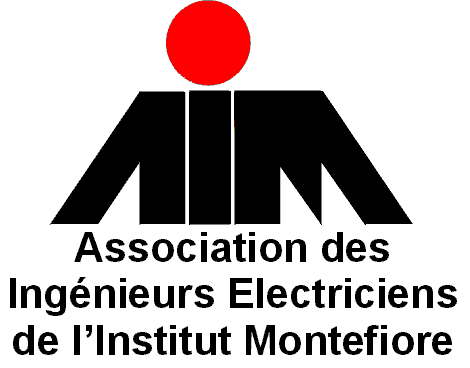
| 
|
MPLS and the New Internet Architecture Advanced Tutorial June 21 and 22, 2000 - Brussels (Belgium) | 
|
|---|---|---|---|
|
André Danthine Université de Liège |

| 
|
MPLS and the New Internet Architecture Advanced Tutorial June 21 and 22, 2000 - Brussels (Belgium) | 
|
|---|---|---|---|
|
André Danthine Université de Liège |
 Introduction
Introduction
 Table of Contents
Table of Contents
 Lecturer
LecturerIn 1983, Professor Danthine launched the ESPRIT I Project 73 aimed at the development of a high speed network for the interconnection of heterogeneous LANs on a broad site. This Project concluded, in 1989, with the installation, on the Sart Tilman Campus of the University of Liège, of the BWN (Backbone Wideband Network) prototype (more than 18 km of optical fibre with a data rate of 140 Mbps). In 1990, Professor Danthine launched a new Esprit project, OSI95, to tackle the design of a new transport service and protocol (TPX) for multimedia applications in a high speed environment including B-ISDN. In 1991, he joined the RACE Project CIO. It is within the framework of this project that the ATM LAN of RUN has been connnected, at 34 Mbps, to the European ATM Pilot for functional and performance evaluations. Between 1994 and 1996, Professor Danthine was also involved in another RACE project, ACCOPI. November 1995 marked the beginning of OKAPI, an ACTS project.
Since its creation in 1992, Professor Danthine has been the chairman of the COST action 237 on "Multimedia Telecommunication Services".
He is often invited to present his vision of the evolution of the network architectures and of the information systems.
His tutorials on the hot topics of the network field are appreciated not only for the quality of the content but also for the provided insight.
Professor Danthine is a member of ACM, of IEEE, of the Editorial Board of "ETT", of the Editorial Advisory Board of the Wiley Series in "Communication and Distributed Systems"; he is the editor of several books and proceedings and the author of more than a hundred papers. Chairman of the TC6 of IFIP from 1979 to 1985, he has been Governor of ICCC since 1982. CRB Fellow in 1960, he received the Melchior Salier Prize in 1961, the "Bell Telephone-100th Anniversary" prize in 1983 and the IFIP Silver Core in 1986. In 1993-1994, he was Francqui Professor at the VUB. He is Doctor of Science Honoris Causa of the University of Kent (1991), and of the University Paul Sabatier in Toulouse (1996). Since October 1997, he has been Professor Emeritus at the University of Liège.
 Tutorial Information
Tutorial Information Dates - Timeschedule
Dates - Timeschedule Venue
Venue Welcome desk
Welcome desk Official Language
Official Language Registration Fee
Registration Fee| - | Registration and payment received before 07 June 2000 | Registration and payment received after 07 June 2000 |
|---|---|---|
| Normal fee | 650 EUR (26221 BEF) | 750 EUR (30255 BEF) |
| Reduced fee | 420 EUR (16943 BEF) | 550 EUR (22187 BEF) |
The fee includes: the tutorial notes, the lunches and the refreshments
during the break.
 Payment
Payment Registration form
Registration form Confirmation
Confirmation
 Practical Information
Practical Information How to reach Brussels ?
How to reach Brussels ?By train: Brussels is easily accessible by Thalys or other international trains. Participants have to stop at Central Railway Station (Gare Centrale). Thalys stops in Midi Railway Station only and people have to take a shuttle train to the Central Railway Station.
By road: Brussels is directly linked to the European Motorway Network via the Northern and Southern Ring.
 Refreshments and Lunches
Refreshments and Lunches Accommodation
AccommodationThe hotel Carrefour de l'Europe is situated in the historical heart of
Brussels and in the immediate vicinity of the Central Railway Station. The
'Parking Grand'Place' is situated under the hotel Carrefour de l'Europe
(price per day : 480 BEF).
Rooms can be booked by the Administrative Office in the following hotels :
| - | single | double |
|---|---|---|
| Carrefour de l'Europe**** : | 7050 BEF | 8900 BEF |
| Ibis Grand'Place** : | 4800 BEF | 5100 BEF |
(Ibis Grand'Place, Grasmarkt 100 rue du Marché-aux-Herbes, tel. + 32 (0)2 514 40 40 & fax + 32 (0)2 514 50 67)
The prices include breakfast, service and taxes.
Reservation will be handled on a first-come-first-served basis. Hotel reservations must be made together with the registration (please fill out the registration form appropriately). All reservations must be guaranteed by a credit card.
You can register now with the on-line Registration form.
|
Technical programme inquiries
Professor André Danthine
Phone : + 32 4 366.26.90 |
Administrative Office
Mrs. Michèle Delville
Rue Saint Gilles, 31
Phone: + 32 4 222.29.46 |
|
Editor: -G. Leduc- Webmaster: -S. Calomme- |
CSS |
RUN |
Montefiore |
ULg © 1999-2000 Last Modified: Thu Jun 13 2000 |